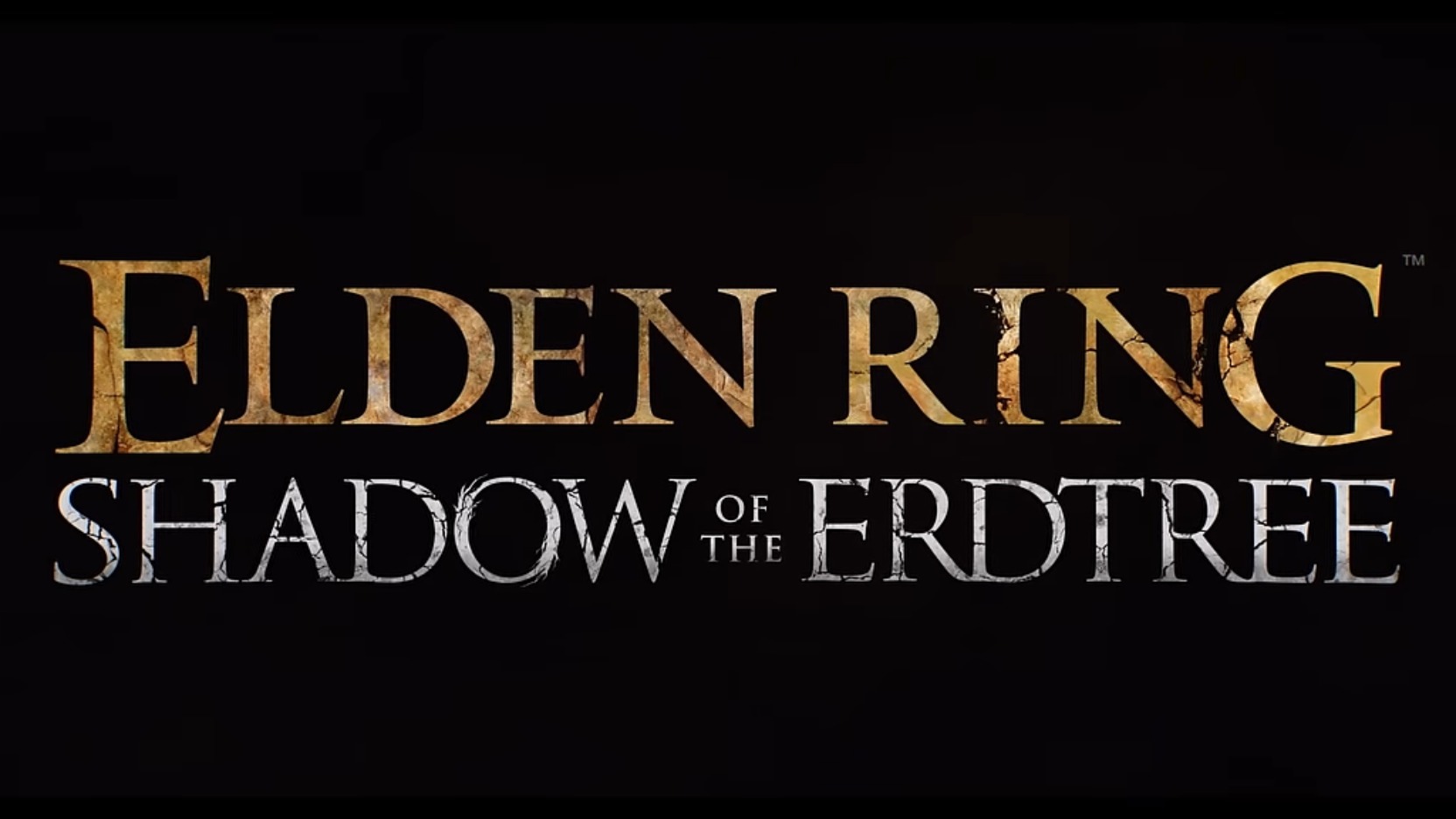
I think I speak for all Elden Ring and FromSoftware fans when I say: IT’S HERE, IT’S FINALLY HERE!! Coming off the heels of winning Game of the Year and single-handedly bringing Soulsborne games into the mainstream, Hidetaka Miyazaki (in collaboration with George R. R. Martin) and the Elden Ring team now finishes the game’s run with the release of its highly anticipated DLC: Shadow of the Erdtree. You better BELIEVE I bought this bad boy right after it came out.
Yes, this is just a DLC and not a full game, but the hype has been so high it seemed worthy of a review. Not to mention, Shadow of the Erdtree has so much depth, it’s more like Elden Ring 2 than a DLC. As such, I will refrain from discussing spoilers about the original game for those who haven’t played it yet.
As an important note, in order to access the DLC, Elden Ring players must first defeat two bosses: Starscourge Radahn and Mohg, Lord of Blood. After defeating Mohg, you must touch the withered hand at the back of the boss room to travel to the DLC location.
So, Tarnished, let us begin.

Story
Explaining the plot of Shadow of the Erdtree is a little complicated since it’s both a continuation of the base game’s lore and generally self-contained. As a quick recap, Elden Ring takes place in the Lands Between, towered over by the divine Erdtree. The land was once ruled by the goddess Queen Marika the Eternal and her demigod children. Marika was also the head of a government/religion/philosophy centered around herself, the Elden Ring, and the Erdtree called the Golden Order. Marika consolidated her power by conquering the Lands Between and exterminating any race or society that posed a threat to that power. By the time of the game, the Lands Between has fallen into ruin and Marika has become a husk of her former self.
Shadow of the Erdtree takes place in a parallel dimension to the Lands Between: the Land of Shadow (kind of an obvious name, isn’t it). Located there is the massive Scadutree, the (drum roll, please) shadow of the Erdtree. Long ago, Marika, doing what she does best, declared a holy war against the Land of Shadow. Her demigod son Messmer the Impaler led the crusade, utterly annihilating the Land in the name of the Golden Order and sealing it off from the world. Messmer’s forces have occupied the region ever since. You may have noticed the word “crusade” used to describe a violent religious war; don’t worry, I’ll get back to that…
Fast forwarding in the timeline, another demigod, Miquella, has now travelled to the concealed Land of Shadow. If you’ve already played Elden Ring, you’ve heard Miquella’s name a million times, seen all his failed attempts to make the Golden Order more egalitarian, fought bosses devoutly loyal to him, and seen the adoration he receives from commoners across the Lands Between. Yet, this dude was nowhere to be found. Now, FINALLY, we get some answers. In the DLC, the player travels to the scorched and war-torn Land of Shadow, along with several other followers of Miquella, to find the utopian demigod.
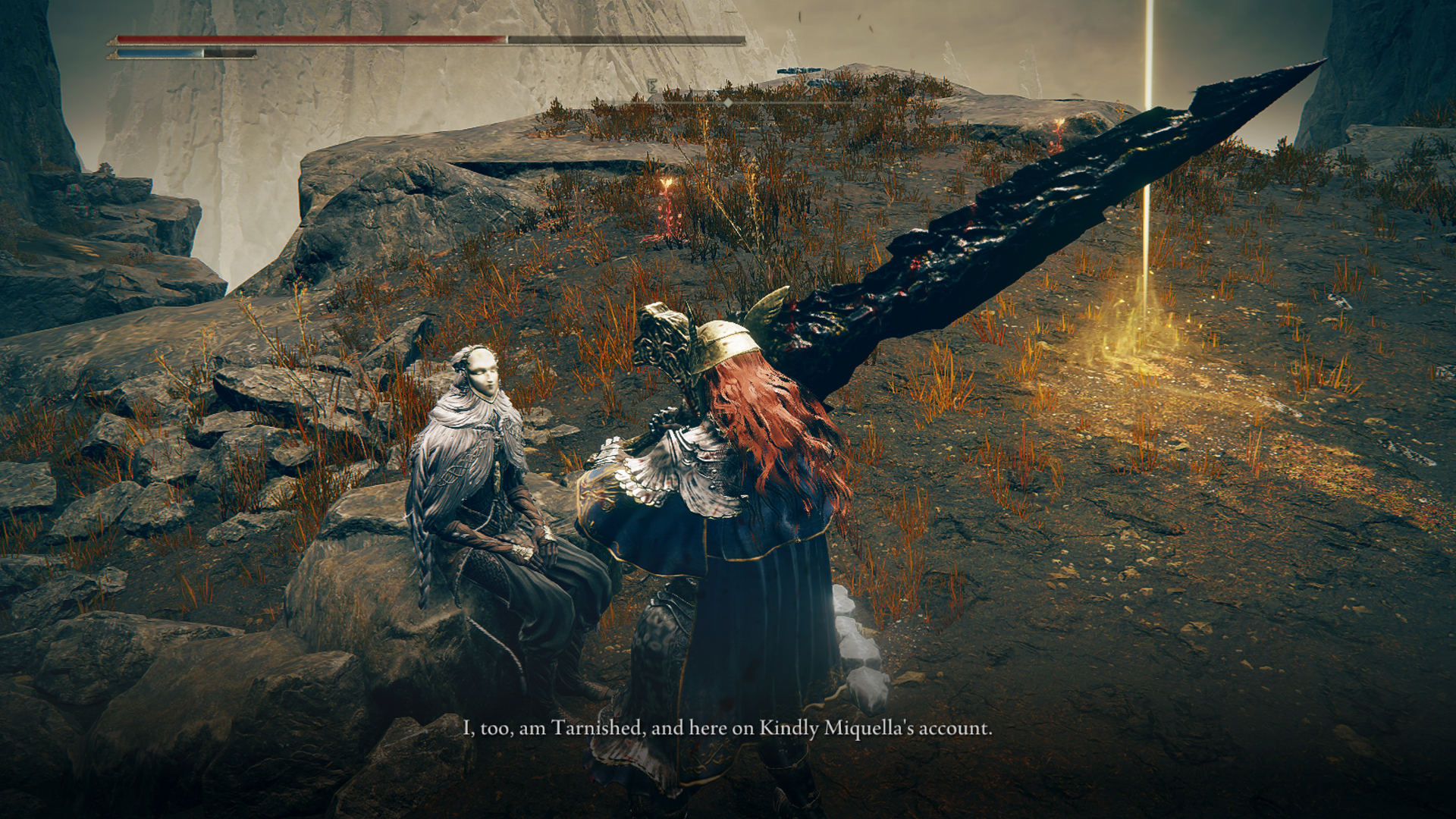
Why was Marika so adamant to destroy and seal off the Land of Shadow? Why did Miquella go there? Does the Loathsome Dung Eater really eat dung? Answers to all these questions and more await you in this incredible DLC.
Although at one point the story kinda becomes a dull mcguffin hunt, other than that it absolutely lives up to the hype, especially for fans of Elden Ring that have been waiting for big lore questions to be answered. And ohhhhhhh boy do they get answered.
Gameplay
I knew this DLC was gonna be good… but I didn’t expect it to be THIS much of a masterpiece. The Land of Shadow map is, physically, as big as the first two Elden Ring areas combined (Limgrave and Liurnia). But because the DLC area itself can’t be as big as the base game, the team made up for it by making the map super complex, with layers upon layers of game design. This makes the Land of Shadow incredibly fun to explore, more than any area in the base game (in my opinion). Just when the FromSoft devs couldn’t cook any more, they also upped the game design for all the linear, dungeon areas. They, too, have an insane amount of depth, making them extremely fun to work through and better than most areas in the base game. I will admit, sometimes there is a little TOO much to do and it can become overwhelming, but that is only a problem in certain areas of the map.
As you explore, you will meet many colorful NPCs who are fellow Tarnished seeking Miquella. By following their questlines, you get to see secret areas and learn massive new lore reveals. Unfortunately, FromSoft NPC questlines are notoriously convoluted, so you’ll probably have to look up every step of how to progress them. I have no idea how Miyazaki expected us to know what to do.
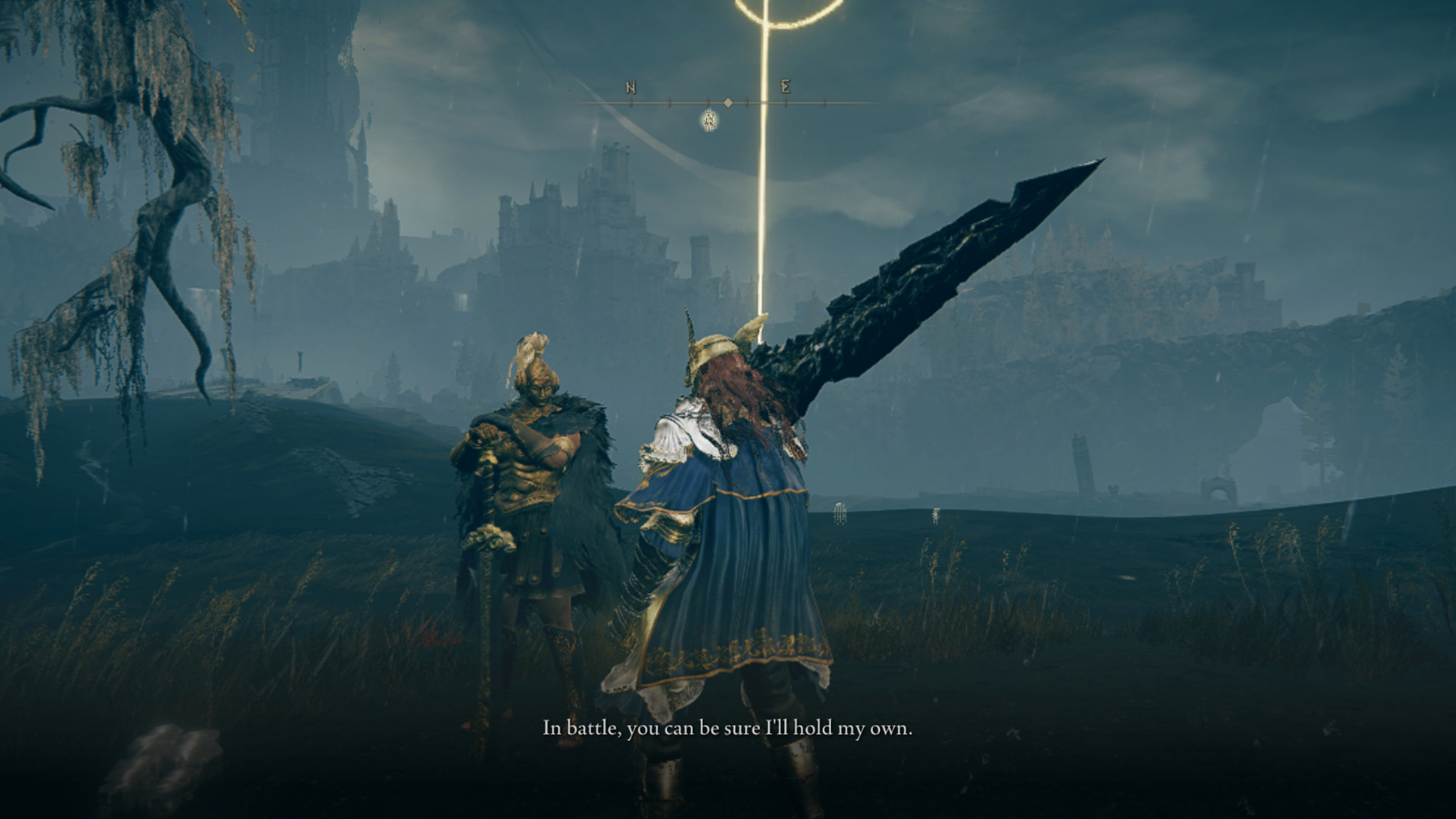
If you’ve seen online discourse about Shadow of the Erdtree, you’ve probably seen people say it’s even harder than the base game… and they are correct. This DLC is not for the faint of heart, and it’s probably best if you finish the base-game first before starting this even greater challenge. Most enemies are basically the same difficulty as late-game enemies from before, but the bosses definitely all become harder. Some of them are about as hard as Malenia, and sometimes they’re harder (let that sink in). BUT, I must admit they are fantastic bosses. Yes, they are really hard, but they are balanced just enough that they are still doable with the right amount of practice (or a mimic tear if you’re really tired of them). After enough deaths, you learn their move-set and it becomes a true toe-to-toe battle.
If it’s of any consolation, there is a new levelling system within the DLC area that upgrades your ability to deal and negate damage, so it’s more accessible to under-leveled players than it otherwise would be.
Art Direction
It’s a FromSoft game directed by Hidetaka Miyazaki, so of course it’s gonna be one of the most beautiful things your eyes have ever seen. On your journey, you will traverse coastal plains of glowing blue flowers, jagged mountain peaks, dark gothic castles, and ruined Byzantine-style cities, to name a few. The new character and enemy designs are epic but also unique in their own ways. My breath was taken away multiple times while playing Shadow of the Erdtree, amazed that this studio can always somehow one-up itself when its work is already so astounding.

As for the amazing music, it coats the landscapes with melancholic serenity and creates boss fights of beauty, horror, sadness, and gravitas (pardon the poetry).
Church History
From a spiritual standpoint, I think Shadow of the Erdtree teaches us the importance of learning Church history. You’re probably wondering how in the world I pivoted onto this point. Well, as much as I will forever gush over the superb lore of Elden Ring and its DLC, there was one point I took issue with: the Golden Order. It’s a philosophical religion that worships in churches and ritually drinks the divine sap of the Erdtree out of golden chalices, whose most devout followers are also bigoted fanatics that kill and destroy anyone or anything they deem impure. Sound familiar? If you’re into history like me, you’ve probably heard this sentence a million times, except it’s referring to medieval European Christianity. These biased, exaggerated stereotypes conjured by anti-religious historians in the last few centuries have become the commonly accepted narrative about Christianity’s role in world history, and I was upset to see it turn up in my favorite game. I am not denying that many Christians, even Church higher-ups, have done horrible and misguided things across the millennia, but to apply this caricature to the entire religion is quite prejudiced.
I could ignore this well enough in the base game since Marika’s greed was behind all the Golden Order’s flaws, but in Shadow of the Erdtree this stereotype becomes more apparent. The game always refers to Messmer the Impaler’s campaign in the Land of Shadow as “the crusade.” The slogan of the crusade is literally: “Those spurned by the grace of gold shall all meet death in the embrace of Messmer’s flame.” Item descriptions tell of the crusaders putting aside all compassion and humanity when besieging the Land, assured of the war’s sanctity, while battlefield priests of the Erdtree worked tirelessly to convert the local heathens.
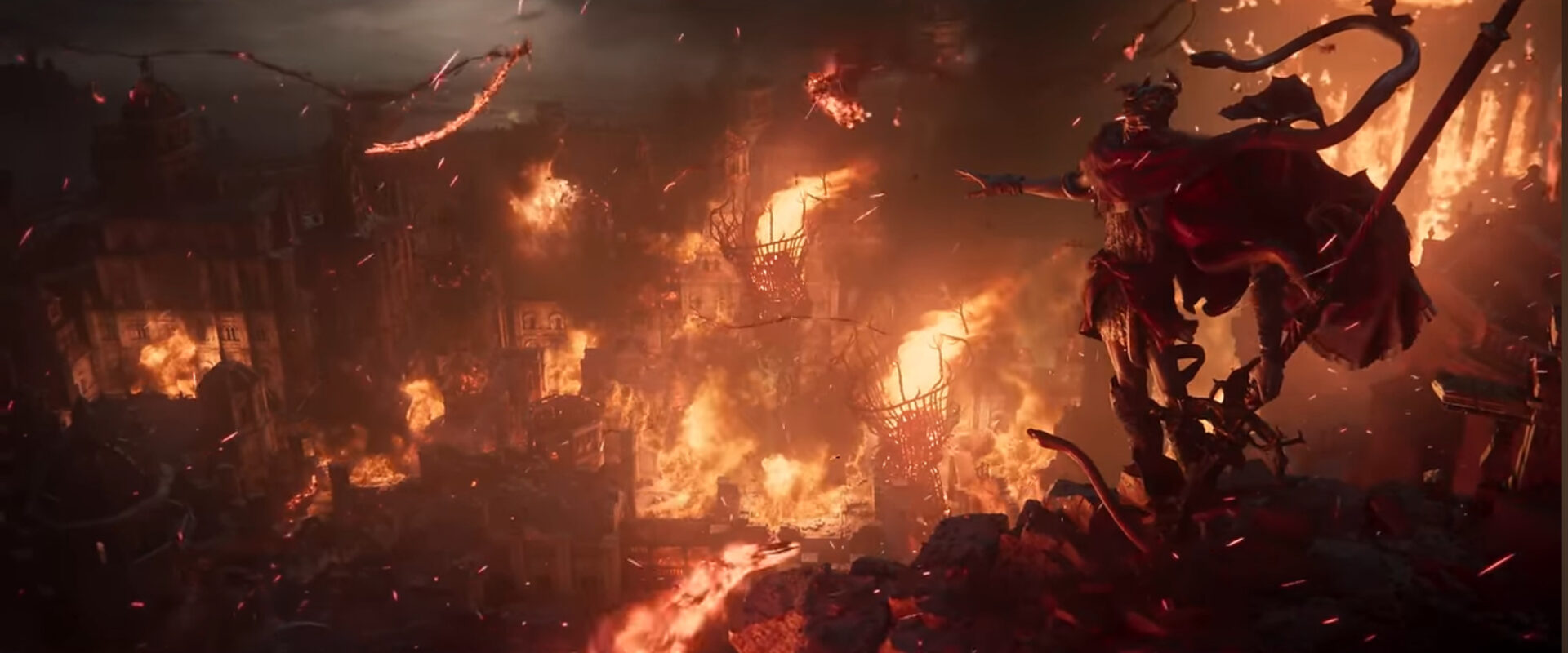
A crusade of volunteers mercilessly slaughtering entire cities of peaceful people in the name of their bigoted religion also sounds quite familiar, doesn’t it? That’s because this is the same way most people view the actual Crusades, of which there were eight that happened inconsistently between 1096 and 1291. The commonly believed narrative (which Elden Ring is drawing from) is that the evil, close-minded, racist Latin Christians invaded the perfectly peaceful Muslim lands with barbarous cruelty, motivated by religious violence never before seen in history, proving that Christianity and organized religion as a whole is terrible for society. But is that really what happened? I’m no Crusades expert, so make sure to do your own research and take what I say with a grain of salt, but here are my thoughts on the subject:
These military campaigns were Western European incursions into the Middle East, both to reclaim territory once belonging to the Christian Byzantine/Eastern Roman Empire and to maintain the Crusader States created there by previous campaigns. The Holy Land had been ruled by Muslim leaders for centuries before the Crusades, and their relative tolerance of Christian pilgrims kept a tenuous peace with Christendom. But specific circumstances in the late eleventh century changed the equation. One of these circumstances was that shortly before the First Crusade was launched, the Holy Sepulchre in Jerusalem had been completely destroyed by a tyrannical Seljuk Turk king, sending shockwaves throughout Christendom; his predecessor worked with the Byzantines to have it rebuilt immediately, knowing the political consequences the event would have, but by then a fear for the safety of Christians in the Holy Land had been firmly planted in Europe.
The political aims of the First Crusade, launched by Pope Urban II in 1095, were to respond to Byzantine calls for aid against its strong Turkish neighbors (thereby improving relations with the Orthodox Christian world) and to halt the territorial expansion of Islamic states into Europe. The religious aims were to regain the Holy Land for Christianity, provide safe routes for pilgrims, and protect the holy sites. The Crusades were military expeditions but also pilgrimages, and those who stayed true to the mission would receive an indulgence. There were definitely certain nobles who joined the movement to fulfill selfish ambitions, but most of the men genuinely wanted to redeem their blood-soaked souls through the expedition, selling and/or mortgaging their assets to pay for the insanely expensive venture. The military religious orders, the knights Templar and Hospitaller, were formed in the Crusader States to provide protection to pilgrims on the perilous roads and to important holy sites.
The Crusades were very much a product of their time. Many modern people make the mistake of judging these events, like many other events of Church history, by modern standards. It is because of this misconception that most view them as evidence for why Christianity is evil. Of course, if over the next few months Pope Francis went across Europe calling on Christians to invade and occupy the countries within the Holy Land, it would be widely condemned (and impossible to pull off). But a modern Pope would never in a million years consider doing that because how the world (and the Church) works and thinks has changed a lot since the Middle Ages, which is why we as a global society now rightfully condemn people inciting violence for religious purposes. But in 1095, it would have made a lot of sense, and I’ll explain why.
Up until recent centuries, religion and politics were not considered distinctly separate things. It was generally understood that they could interweave to gain multiple benefits from an action. Leaders of Islamic, Hindu, and Buddhist states thought the same way and often acted accordingly, such as the religio-political concept of Jihad employed by Muslim rulers of the era or the “Law of Heaven” principle in China inciting citizens to overthrow the government based on the gods’ displeasure. Even the ancient Greek city states, whose religion is considered by many to be much more enlightened than the evil, oppressive Christianity that replaced it, had multiple “Sacred Wars” over control of the holy site of Delphi. So no, the idea of going to war for religious aims was not a Papal invention. In the eleventh century, religious borders were also political borders, and religious dissidents were also political dissidents. For the leaders of Christendom to decide to retake the Holy Land both for spiritual and political aims was pretty par for the course worldwide. For example, Muslim rulers in modern-day Turkyië and Syria opposed the Crusaders both for territorial reasons but also because they believed they were pushing infidels out of the “Abode of Islam.” Even the honorable Salah ad-Din Yusuf ibn Ayyub (commonly known as Saladin in the West), the ruler of Egypt and Syria who conquered the Kingdom of Jerusalem in the late 1100s and fought off the Third Crusade, was an adamant Jihadist. Because these ideas were so widespread, I honestly believe leaders of most regions and religions at that time would have done something similar to the Crusades under similar circumstances. At times the existence of the Crusader States even led to greater friendship and unity between Latin Christendom, Orthodox Christendom, and the Islamic world than most other points in their shared history.
However, despite the fact that they were a part of general trends from that era, the Crusades are not completely innocent of faults. Pope Urban and other members of the Church greatly embellished anti-Christian actions taken by Muslim rulers, and often made Muslims out to be a race of unholy vermin tainting Christ’s homeland. Whether they did this deliberately to increase support for the Crusades is unknown, but what most likely happened was that since communication was limited at that time, rumors and biased exaggerations often weeded their way into news as it traveled, and by the time news from the Holy Land got to Western Europe, it had been very contorted indeed. Still, it does not negate how these messages proliferated by the Church caused Islamophobia (a modern term, but I believe it still applies) to skyrocket across Europe to violent levels.
Weary, battle-hungry, and ill-disciplined, the Crusaders often plundered random towns and massacred civilian populations, mostly Muslims (who they largely dehumanized) but also Jews and non-Latin Christians. The worst instance was at Jerusalem in 1099, where the frenzied Crusaders stormed the city and burned, stole, raped, and killed anything they could. Turkish and Arab warlords committed similar atrocities when fighting against the Crusaders, such as at the siege of Edessa in 1144 where all the Latin Christians in the city were slaughtered, but that is no excuse for lawless brutality, especially when these events were even at times condemned by Christian and Muslim chroniclers from the era itself. As the Crusades went on, the religious aims were more and more used as empty excuses by secular lords to plunder Muslim and Byzantine lands, and to take extra territory for themselves. The Fourth Crusade in particular devolved into an invasion of the Byzantine Empire as an errand for Venetian merchants, leading the Pope to excommunicate everyone who went on the campaign. Back in Europe, the Crusader fervor spiraled out of control, with nobles and angry mobs alike hunting and slaughtering Jews, pagans, and heretics to “purify” Christendom. These adjacent campaigns were sometimes ignored by the Church, other times actively condemned by it, and other times unfortunately sanctioned by it. Overall, I see most of the Crusades’ faults as being the consequences of sinful human behavior (ethno-religious scapegoating, greed, bloodlust, etc) rather than that of Christianity itself, but it is still true that at certain times the Church could’ve done more to try and prevent them.
So, is Messmer the Impaler’s crusade reflective of the actual Crusades? The answer is mostly no. Although the Crusades were a product of their time’s norms and are not the testament to why religion is an evil social contagion like many modern people think they are, in my personal opinion, they are still not something we as Catholics should necessarily idolize. A lot of mistakes were made despite the movement’s justifiable intentions. In the year 2000, St. Pope John Paul II apologized to Muslims and Orthodox Christians for the atrocities committed by Latin Christians during the Crusades and asked for their pardon.
To be clear, the lore about Messmer’s crusade and the Golden Order is still amazingly written. As well, this lore likely does not reflect the opinions of the gamemakers, and, especially since most of them were Japanese and likely are not intimate with Western history, were probably taking common knowledge about these events and then embellishing them for the sake of drama. After all, the Western-inspired architecture, weapons, and armor are also extremely exaggerated, so it only makes sense for historical caricatures to be as well.
But the continued use of biased, anti-religious narratives in media surrounding Church history, even if the creators add them unwittingly, highlight why it is crucial for Catholics to understand their own legacy so that they know what to be genuinely apologetic for and what about these narratives are false accusations. If they do not do this, then they run the risk of letting these inaccurate narratives create a negative mental picture of their faith, allowing for both their own anxieties and the Evil One to create poisonous doubts that will only build over time.
Phew. Rant over, I promise. Back to Elden Ring.
Overall
Shadow of the Erdtree is worthy of praise in every aspect. It may be a DLC, but the quality has not dropped one bit. If you enjoyed Elden Ring, I highly recommend playing Shadow of the Erdtree. You may rage every now and then, but the experience is well worth it.
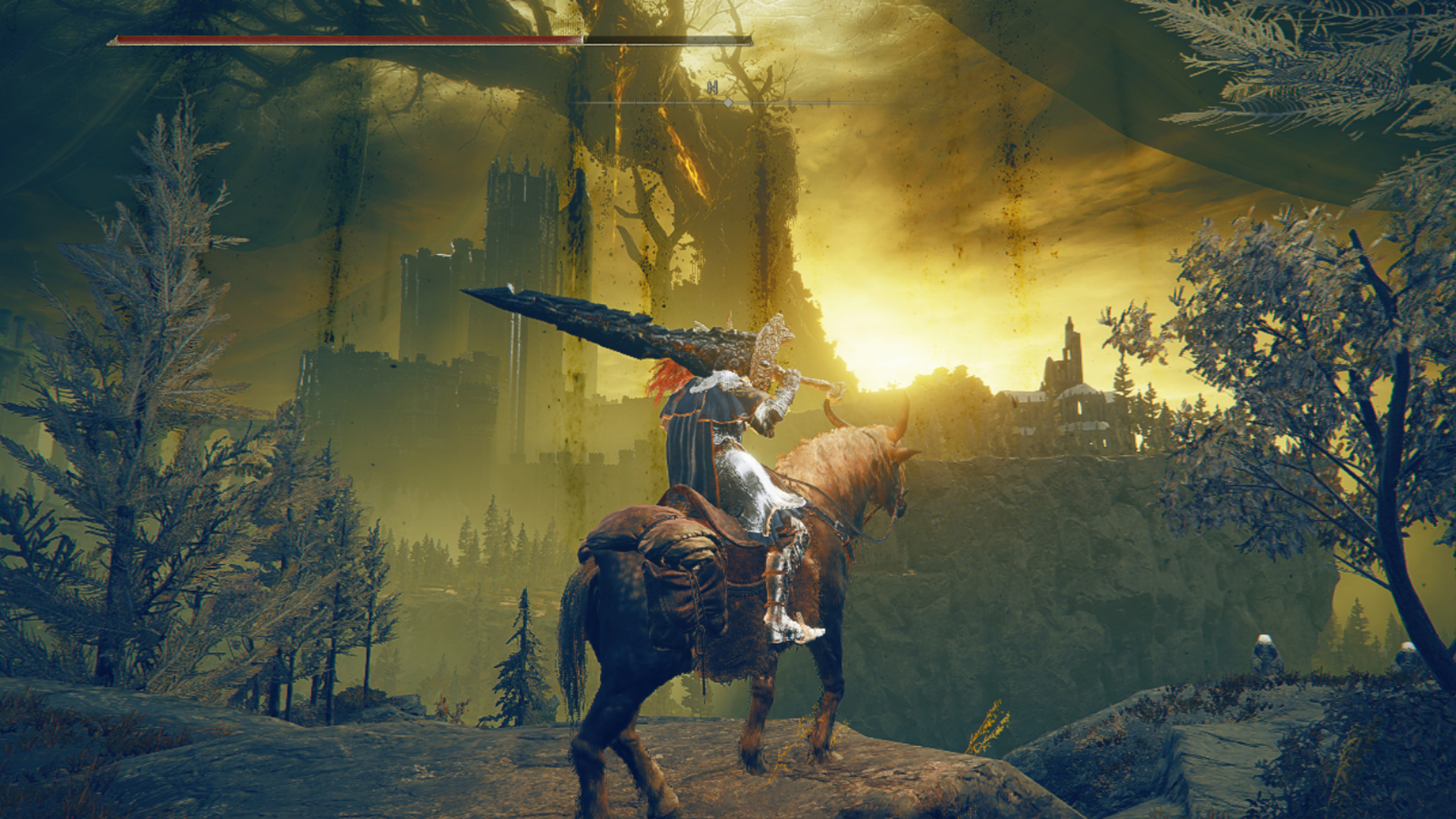
Scoring: 96%
Story: 4/5
Gameplay: 5/5
Controls: 5/5
Visuals: 5/5
Replayability: 5/5
Morality/Parental Warnings
Violence/Distressing Content: Needless to say, Shadow of the Erdtree is violent. You fight mostly with melee weapons and there is a lot of blood that splatters around when you do. Heck, there’s even blood magic in the game. On top of that, you are traversing a land destroyed by war and occupied by heartless people, so sometimes you will come across things like forts with soldiers hanging from the battlements, piles of rotting corpses, and dungeons filled with horrible, fleshy experiments. Bosses will even graphically maim themselves to make them stronger for the second phase of their boss fight. Boss and enemy designs can be graphic as well. Additionally, you can expect to find sad things like people from the Land of Shadow weeping at mass graves for their slain kin, or just weeping in a random corner because their grief has made them senile. Y’know, fun stuff.
Religion: I have already gone into detail about how some negative stereotypes about historic Christianity are present in the game’s lore. There are also messed up cults the player comes across in the Land of Shadow, such as the Bloodfiends who worship something called the Formless Mother or the Church of the Bud that worships… bugs, I guess.
Philosophy: In tune with other FromSoftware games and their main inspiration, the EXTREMELY dark manga series Berserk, the game can be quite bleak. There are themes such as how the world is unforgivingly cruel, how nothing is truly good, and how many may work to fix the world but it can ultimately amount to nothing. These can be interesting to explore from a storytelling perspective, but Catholics must be careful to not let such negativity overwhelm them about the real world. As bad as the world can be at times our ultimate joy is still alive in Christ.
Sex/Nudity: The player, whether male or female, can strip down to their underwear. Nothing graphic, but it could be a concern for younger players.
Miscellaneous: This DLC explores more of Miquella’s nature as a multi-being from the base game, meaning that he has a male persona and a female persona within him. These personas manifest as physical people in the game, with Miquella being the dominant one. Certain members of the Soulsborne community have taken this to mean that Miquella is gender non-binary, and will refer to him using they/them pronouns. However, nowhere in the actual game is this confirmed or insinuated. Miyazaki has in past games also played around with gender roles without it being a commentary on transgenderism, and he did it a few times in Elden Ring. Sometimes people need to remember that these games originate from a Japanese perspective that are blending Japanese storytelling traditions with Western influences, so scenarios like an eternally-youthful demigod being part male and part female most likely will not be about the things Westerners assume it’s about.
Miquella’s female persona is named St. Trina, which is a cool name but it still uses the title “saint” somewhat flippantly. Another boss has the title “Saint of the Bud,” which some Catholics may find flippant as well.
There are also instances where incestuous relationships are shown or insinuated (you couldn’t just keep it in A Song of Ice and Fire, could you, George).
